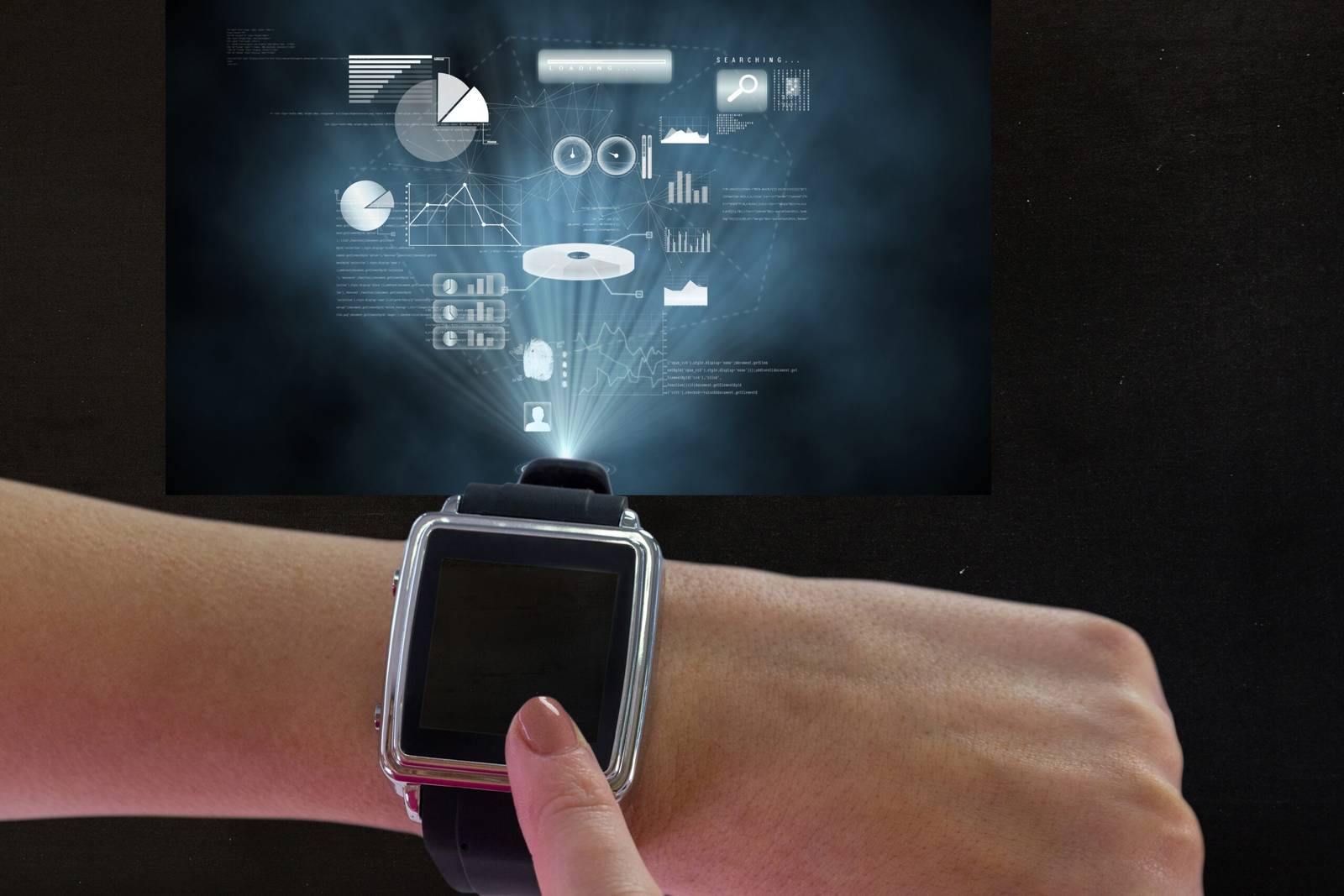The Future of Wearable Technology

by Web Digital
Wearable technology has rapidly evolved from a niche concept to a ubiquitous part of our daily lives. The Future of Wearable Technology, fitness trackers, and augmented reality glasses. Health monitoring devices have become commonplace, offering a glimpse into a future where wearable tech plays an even more integral role. In this article, we’ll explore the current state of wearable technology. Its applications in various fields, and the exciting prospects that lie ahead as we delve into the future of wearables.
The Current Landscape of Wearable Technology
Wearable technology, often referred to as wearables, encompasses a wide range of devices designed to be worn on the body. Typically with the purpose of tracking, monitoring, or augmenting various aspects of our lives. Here are some of the most common types of wearables and their current applications:
Smartwatches: Smartwatches have become popular for their ability to provide notifications. Track physical activity, and even monitor health metrics like heart rate and sleep patterns.
Augmented Reality (AR) Glasses: AR glasses, like Google Glass and more recent iterations. Provide an overlay of digital information on the physical world, opening new possibilities for work and entertainment.
Health Monitoring Devices: Wearables that monitor health metrics have gained prominence. Enabling individuals to keep track of their vital signs, such as blood pressure, glucose levels, and ECG readings.
Smart Clothing: Smart textiles and clothing embedded with sensors can measure various physiological parameters. Offering comfort and performance benefits for athletes, patients, and everyday users.
Smart Jewelry: Wearable tech has extended to fashion accessories, like smart rings and necklaces. Which offer discrete notifications and tracking features.
Applications of Wearable Technology
Wearable technology finds applications in a wide array of fields, including:
Health and Fitness: Wearables have revolutionized the health and fitness industry. They can track physical activity, heart rate, and sleep quality, and even help in diagnosing and monitoring medical conditions.
Healthcare: In healthcare, wearables play a vital role in remote patient monitoring. Allowing healthcare professionals to keep track of patients’ health from a distance.
Sports and Athletics: Athletes use wearables to enhance their training and performance. Monitoring metrics like speed, acceleration, and heart rate during workouts and competitions.
Augmented Reality: AR glasses are being used in various industries, from manufacturing and logistics to healthcare and education. Offering hands-free access to important information and digital resources.
Fashion and Lifestyle: Smart clothing and jewelry blend fashion with functionality. Enabling users to stay connected and monitor health metrics discreetly.
Work and Productivity: Wearables like smart glasses are increasingly being used in workplaces for remote assistance, training, and hands-free access to information.
Entertainment: Virtual reality (VR) and AR headsets are used for immersive gaming experiences and interactive entertainment.
Accessibility: Wearables provide tools for individuals with disabilities. Such as hearing aids with advanced connectivity and smart glasses with object recognition for the visually impaired.
The Future of Wearable Technology
The future of wearable technology holds promise for further advancements and innovations that will change the way we live, work, and interact with the world. Here are some key trends and developments that will shape the future of wearables:
Advanced Health Monitoring: Wearables will continue to evolve as powerful health monitors. They will not only track vital signs but also provide early warning systems for medical conditions. Helping users and healthcare professionals in disease prevention and management.
Extended Reality (XR): The lines between augmented reality (AR), virtual reality (VR), and mixed reality (MR) will blur, creating immersive experiences that seamlessly blend the physical and digital worlds.
Smart Textiles: Innovations in smart textiles will lead to clothing that can change colour. Adjust to the temperature, and offer therapeutic benefits, enhancing comfort and utility.
Enhanced Connectivity: Wearables will become more interconnected with other devices, forming a seamless Internet of Things (IoT) ecosystem, and allowing data sharing and control from multiple devices.
Voice and Gesture Control: Improved voice recognition and gesture control will make interactions with wearables more natural and intuitive, reducing the need for physical interfaces.
Energy-Efficient Designs: Wearables will feature more efficient power management, longer battery life, and even energy harvesting technologies, reducing the need for frequent recharging.
Personalized AI Assistants: Wearables will be powered by advanced artificial intelligence (AI) that offers personalized insights and recommendations based on user preferences and behaviour.
Privacy and Security: As wearables collect more sensitive data, robust privacy and security measures will be essential to protect user information.
Environmental Sustainability: Wearable tech companies will focus on creating eco-friendly products with recyclable materials and reduced carbon footprints.
Human-Machine Integration: Wearables will advance towards a more seamless integration with the human body, potentially leading to implanted or subdermal devices with a wide range of applications.
Conclusion
Wearable technology has come a long way since its inception, with current applications spanning health, fitness, entertainment, and more. The future of wearables holds tremendous potential, with advancements in health monitoring, extended reality experiences, smart textiles, and much more. These innovations promise to reshape the way we live and interact with technology, offering convenience, customization, and new ways to enhance our health, work, and entertainment. As wearable technology continues to evolve, it will undoubtedly become an even more integral part of our lives, enhancing our capabilities and providing exciting new possibilities for the future.
Recommended Posts

Web Design Trends in Toronto for 2025
September 12, 2025


